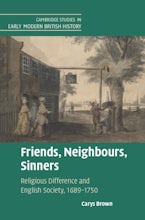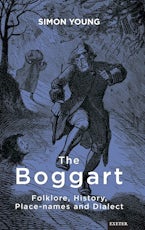- Home
- history
- body, mind & spirit
- Vexed with Devils

Vexed with Devils
Manhood and Witchcraft in Old and New England
By: Erika Gasser
272 Pages
- Hardcover
- ISBN: 9781479831791
- Published By: New York University Press
- Published: July 2017
$35.00
Recent decades have seen much academic attention focused upon the witch trials of the early modern period, examining the traumatic events from a range of perspectives and putting to rest the misleading speculation about pagan survivals that was so widespread through much of the 20th century. One of the aspects to the trials that has been most profitably pursued is the element of gender, an unsurprising focus given that ideas of witchcraft were so often viewed through stereotypes of womanhood and that the majority of those accused and executed throughout Christendom were female.
While much attention has focused on the place of women in the witch trials, in Vexed with Devils, Erika Gasser—presently an associate professor of history at the University of Cincinnati—shifts focus to look at the lesser studied place of men in these incidents. The witch trials took place across many lands and exhibited a great array of permutations, and thus Gasser has sensibly imposed restrictions as to what material she looks at: geographically, she explores only England and New England, while thematically she emphasizes accounts entailing demonic possession and witchcraft possession. While understandings of demon possession may be familiar to contemporary readers (thanks in part to popular culture depictions like The Exorcist), the concept of witchcraft possession is less likely to be. Gasser defines it in reference to “cases in which those who suffered the spectral torments associated with demonic possession also named a witch as the cause” (1).
In her introduction, Gasser outlines her desire to pursue “the gendered cultural meanings of possession and witchcraft” (8) and presents the argument that “manhood was a crucial factor in the articulation of judgement upon both the women and men who were implicated in these incidents” (3-4). Gasser also notes that she wants to distinguish her work from much recent research on the witch trials both by emphasizing the place of continuity over change and by highlighting transatlantic links rather than honing in on regional particularism (4).
In the second chapter, Gasser examines how during the 1593 trials of the alleged witches of Warboys in Huntingdonshire—in which the Samuel family were accused of bringing about the possession of some of their neighbors—the family patriarch John Samuels was “unmade as a man, before his conviction and execution” (41). Remaining in England for chapter 3, the book examines the published dispute between the Puritan minister John Darrell, who had earned a reputation for removing demons from individuals, and the Anglican chaplain Samuel Harsnett, who claimed that Darrell was a fraud. Specifically, she focuses on how the pair and their respective supporters used gendered language to undermine each other.
Switching focus to New England, in chapter 4 Gasser looks at the Reverend George Burroughs, one of those accused and executed during the famous Salem witch trials in 1692. Delving into the gendered aspects of his downfall, she argues that rather than being effeminized by his accusers, Burroughs was seen as having “perverted” his roles as a man and a minister in ways which “ultimately made him resemble a particularly powerful wizard, conjuror, and future king of Hell” (116). In the fourth chapter, Gasser focuses on another public debate on the veracity of possession in this period, that between the Puritan minister Cotton Mather and the merchant Robert Calef. Mather was a believer in the presence of malevolent witches within the New England community and discussed the alleged possession of a young woman named Margaret Rule as evidence for this; Calef, who had been among those who had witnessed Rule’s affliction, was skeptical. Gasser notes that in presenting their arguments against one another, both writers invoked “components of honorable manhood to justify their claims to patriarchal authority” (144).
Gasser’s approach utilizes published tracts from the early modern period rather than archival material, so while her discussions provide a novel perspective and slant, specialists in the topic should already be familiar with the cases under discussion. But for many scholars of religion more broadly, much of this material may well be new. BecauseVexed with Devils is not geared up as a primer on the subject of the witch trials it would be strongly advised that anyone wanting to read this volume familiarize themselves with some of the broader literature on the topic first, so as to better understand the material which Gasser discusses. Certainly, there is nothing here that will revolutionize understandings of the early modern witch trials, but it does add additional depth to our comprehension of how issues of gender impacted not just the trials themselves, but also the broader societal discussion regarding the presence of witchcraft and possession in early modern society. In doing so, the book succeeds in demonstrating Gasser’s contention that “feminist scholarship and witchcraft history, despite their rocky past relationship, can work together profitably” (8).
Ethan Doyle White is a doctoral student in Early Medieval Religion at University College London.
Ethan Doyle WhiteDate Of Review:July 11, 2018
Erika Gasser is assistant professor of history at the University of Cincinnati.











